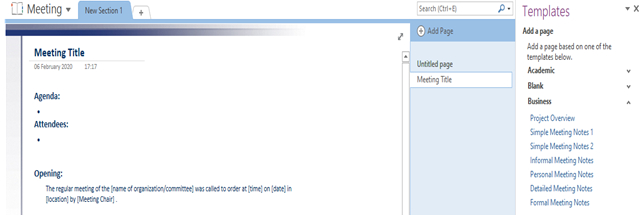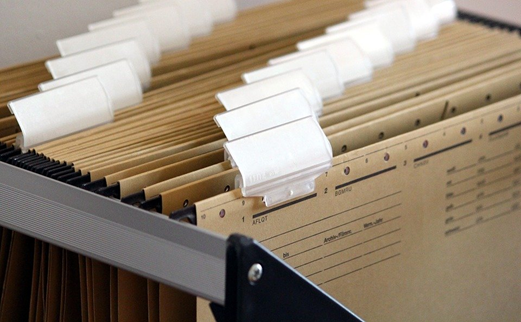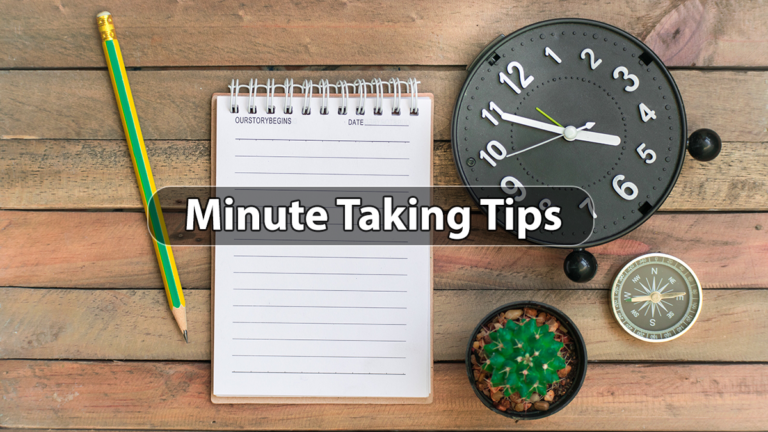Looking back on the first day at work always brings a smile on my face, realising how much I have evolved as a person. As it was my first time being in a professional environment, I was having a hard time coping. For example, on the very day of my joining, I had to attend a meeting. As my superior asked me to take ‘minutes’, I looked at him with grave confusion. Naturally confusing taking minutes with taking a break, I wondered why I should take a break when my first meeting is happening.
Lucky for me, he immediately understood the situation and briefly explained what it means to take minutes. It was then when I learned that taking minutes at a meeting refers to the documentation of the highlights, actions and proposed motions of a meeting for all the associated with these agendas. It helps the people absent in the meeting to fill in on the discussed matters as well as a memorandum for the attendees.
Minutes can be taken in written or recorded form, though the former is widely used. Another thing to remember is taking notes and taking minutes can sound like the same idea, but they really aren’t. Minutes are kept for records and aim to serve all individuals involved. Notes, on the other hand, are taken for personal use, for one’s own comfort. Learning to take minutes will ultimately improve the way you used to take notes anyway.
My superior at my first workplace was patient enough to enlighten me on this important office work, yours might not be. So it’s best to prepare for it beforehand. On a related note, let’s address the elephant in the room.

Well, it is usually the responsibility of specific designations like Company Secretary (CS), Stenographer, Scribe, Personal Assistant (PA) etc. But, any attendee of a meeting can be tasked with taking minutes by the chairperson or equivalent responsible person of the meeting. Also, minute taking is also a regular activity for Journalists. So, if you are or aspire to be one of the above-mentioned professionals, then mastering the art of minute taking is a must. However, it should be a key skill to learn regardless of your career path. And that’s where this article comes in. In a pointer-based manner, it will try to cover the best possible ways to take minutes at a meeting. In addition to that, you can check this out for a more detailed understanding.
So, without further ado, let’s jump right into…
10 Effective Minute Taking Tips
1. Preparing in Advance
Early preparation always makes any task easier. Minute taking is no different. Outlining the whole meeting makes the minute taking process more simple and organised. In order to prepare for the meeting, you can talk with the chairperson of the meeting to get all the agenda beforehand. After that, you will get a proper framework of the meeting, which will enable you to take minutes swiftly. Moreover, this technique helps to determine when and to whom you should focus on.
2. Learn When to Put Your Pen Down
Minute taking doesn’t necessarily mean you have to write every single word spoken. Minutes put emphasis on the key points, important decisions and future plans discussed at the meeting. Just note these down in an organised manner. Also, know when to concentrate on what’s being said. Don’t miss something important being busy with your notes. On a different note, organising notes during the meeting is considered a bad practice. Finish the meeting first, then proceed to activities like rewriting, organising, filing, etc.
3. Remember Who’s Who
You have to know the names of everybody present at the meeting. If you can’t recognise someone, or can’t remember someone’s name, just ask away. Don’t be shy, otherwise, it will hamper the process as you won’t label speeches and given tasks to the respective individuals.

4. Sit in the Hotspot!
Sit where it’s the most happening. Try to sit close to the key speakers of the meeting so you get a closer observation. It will also ensure you don’t miss anything out due to factors like distance.
5. Choose Your Medium Wisely
Well, first, you have to choose whether you will write or record the audio of the meeting. While the latter seems easier and more convenient, it may require you to transcribe the audio later for some purpose. On the other hand, recording may enable you to concentrate and participate more in the meeting. To sum up, it’s entirely up to your choice and requirements. If you choose to write, which is more standard, then comes the choice between writing on paper and writing on a digital device. Though using pen and paper has always been around, taking minutes digitally is becoming more and more popular with the ongoing technological advancements worldwide. Digital devices usually include laptops, tablets (with/without stylus), etc. You should also keep a backup tool in hand in case something goes wrong. You can even use applications designed especially for taking minutes and notes. For example, Microsoft Onenote is a widely used cross-platform application for this purpose. To get a hands-on idea on the minute taking process using Microsoft Onenote, check out all the topics you need to cover.
6. Bring Your Templates with You
To make things easier for your recurring meetings, you are welcome to use a consistent template. If you are a pen & paper kind of guy, you can form a draft. Some pointers can be added to such draft like –
- The names of the attendees
- Agendas
- Significant dates
- The main points
- Tasks
- Decisions taken at the meeting
- Future plans
If you are using a digital medium, using templates is more convenient and natural. Many apps associated with notes and taking minutes have predesigned templates. For instance, Microsoft Onenote has tons of templates to choose from in their library.

7. Get Crafty!
Hey, it’s your job to cover all the important bits and pieces of the meeting. So, you can be creative with how you jot them down. Draw symbols, circles or use underlines to highlight significant texts. You can even draw figures! What matters is the end result, not how you choose to do it.
8. Be Consistent While Writing
Either when you take minutes, or when you polish them later; you should check your grammar. Be consistent with your tense. The global standard is to write in the past tense and in 3rd person. However, you choose to write, just stick with it. You should also remember to proofread before filing them.
9. File everything!
It’s always a good practice to file and organise your taken minutes. This helps in the long run, serving as future reference. It also comes in handy for creating a timeline and dividing up future tasks inside the company.

10. Hand Them Out!
It’s a nice gesture to make copies of the minutes you took and distribute them among others. It can be the exact thing, or it can be a summarised version. It’s most useful to those who were absent but need to know about the discussed matters at the meeting.
That’s it. Now you know how to get started with those minutes to be taken at meetings. However, to get a more clear view of this skill, you can take a dive into an online course; that covers everything you need to know about minute taking with interesting video lessons and online study materials. Wasting no more time, you can get started right away by clicking here.
Read more blogs
- The 15 Top Custom GPT Tools of 2024
- Why Every Employee Needs Data Analytics Skills in 2024
- Making the Most Out of Team Communication in 2024
- 10 Growth Marketing Strategies for 2024
- Christmas Cooking Guide: 10 Tips for Healthy Diet
- The Ultimate Guide to Healthy Diet During Holidays
- How to Become a Teaching Assistant with no Experience in the UK
- 10 Game-Changing Microsoft Office Hacks That You Must Know
- The Future of Work: How to Stay Relevant in a Changing Job Market
- The Ultimate Guide to Become A Care Worker in the UK
- Boost Your Brand with Ghostwritten Content: The Smart Business Move
- Mastering the Art of the Education-First Resume: Essential Tips and Strategies
- From Classroom to Career: The Transformative Power of Education on Job Prospects
- How To Write A Military Resume: A Complete Guide
- 10 Essential Soft Skills In 2023 and How to Develop Them





 LOGIN/Sign up
LOGIN/Sign up






